-
SIPO = 74HC595 = 0.035 - Nexperia(安世) 封装: SOIC-16
-
SNx4HC595 8-Bit Shift Registers With 3-State Output Registers
functions
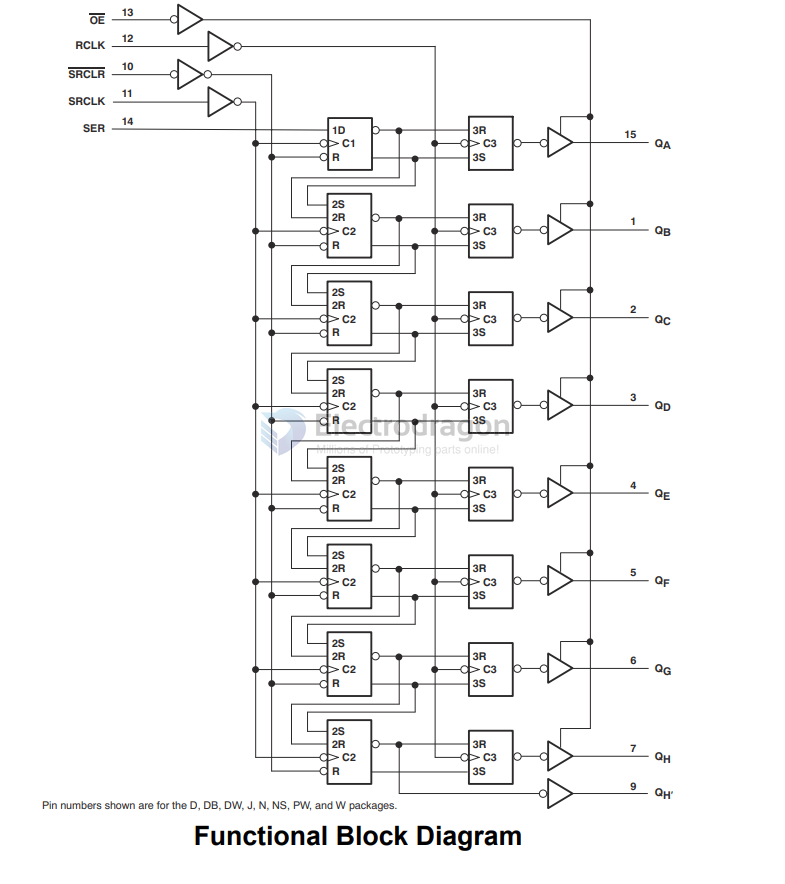
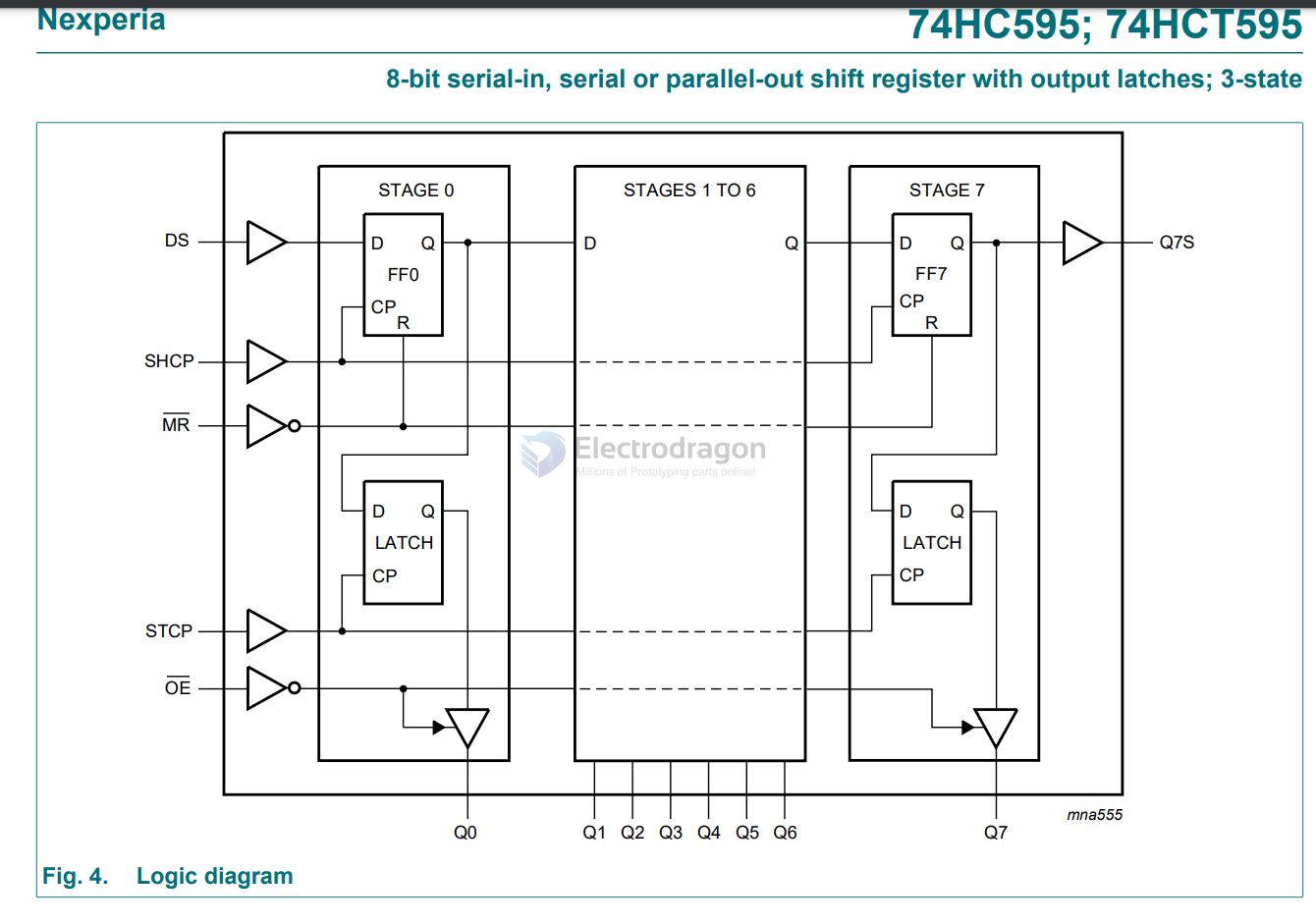
Drive the 7-segment led display
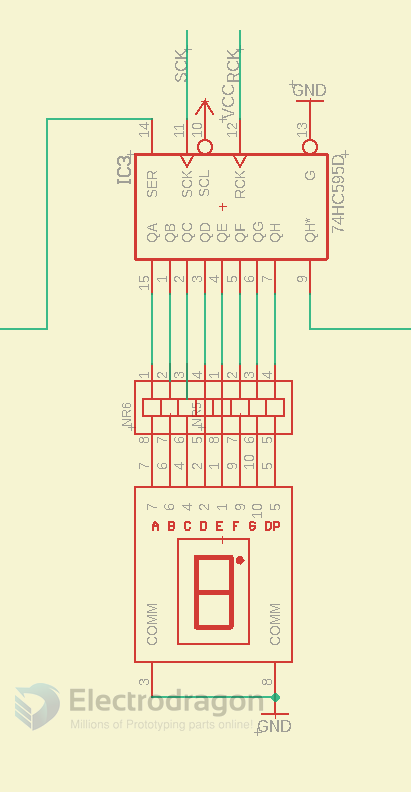
run with RPI
- library - https://pypi.org/project/pi74HC595/
install
pip install pi74HC595
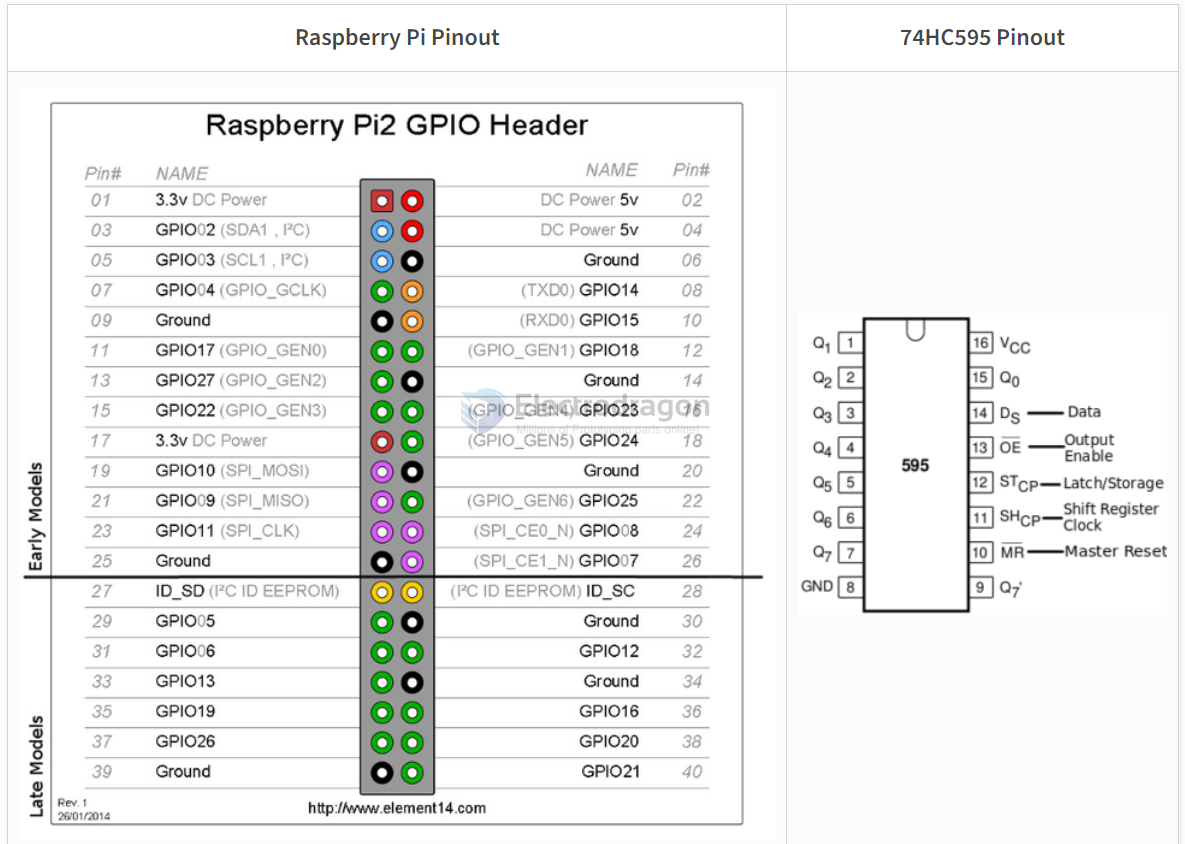
pin
- DS - data
- ST - latch
- SH - shifter register clock
optional
- OE - output enable - default ground
- When the output-enable (OE) input is high, the outputs are in the high-impedance state.
low power alternative versions
If you're looking for low-power alternatives to the 74HC595 shift register, here are a few options:
74LV595:
- This is a Low Voltage CMOS version, designed for low-power applications.
- It operates in a voltage range of 2V to 5.5V and consumes less power compared to the 74HC595.
74LVC595:
- The LVC series offers even lower power consumption.
- It supports a voltage range of 1.65V to 3.6V, making it suitable for battery-powered or low-power designs.
TLC6C5912:
- A low-power constant-current shift register, often used for driving LEDs with better energy efficiency.
TPIC6B595:
- An enhanced version of the 74HC595, integrating current-driving capabilities while consuming lower power for driving loads.
74LV595 vs 75HC595
The 74LV595 is a low-voltage CMOS version of the 74HC595, and it can indeed save power, especially in lower voltage operations. Here's a general comparison between the two in terms of power savings:
- Supply Voltage:
- 74HC595 operates at 2V to 6V, but is typically used at 5V.
- 74LV595 operates at 2V to 5.5V and is optimized for lower voltage, typically 3.3V or even lower.
- Power Consumption (at 5V supply):
- 74HC595: The typical quiescent current (static power consumption) is about 80 µA at 5V.
- 74LV595: The typical quiescent current is much lower, around 4 µA at 5V, and even less at lower voltages (about 1 µA at 3.3V).
- Dynamic Power Consumption:
- For both chips, dynamic power consumption depends on the switching frequency, load capacitance, and operating voltage. 74LV595 consumes less dynamic power compared to 74HC595 because lower operating voltage results in reduced power dissipation during switching.
Power usage
Power Savings Estimate:
If you're operating at 3.3V or lower:
- 74LV595 will consume significantly less power. For example, at 3.3V, the power consumption can be 5 to 10 times lower compared to 74HC595 at 5V.
- If your system can operate at 3.3V or less, switching to 74LV595 can provide substantial power savings, both in terms of static and dynamic power consumption. The exact savings depend on your operating voltage and switching frequency, but a reduction in quiescent current from 80 µA to 1-4 µA gives you a good idea of the potential savings.
calculations
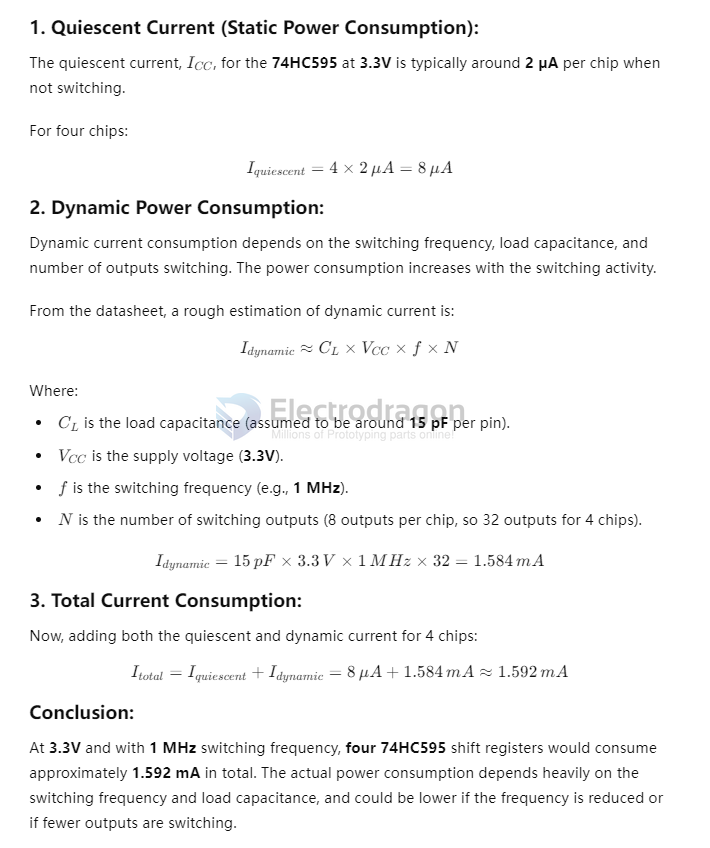
Current explanation
- Output Clamping Current (𝐼𝑂(𝑐𝑙𝑎𝑚𝑝)): Current that flows through internal protection diodes when the output voltage exceeds limits (e.g., overvoltage).
- Output Current (𝐼𝑂): The current the chip can source or sink on the output pins.
- Supply Current (𝐼𝐶𝐶): The total current the chip draws from the power supply, including both idle and switching power consumption.
code
DS
- 74LV595 = https://atta.szlcsc.com/upload/public/pdf/source/20240724/57831ADF1CCBDDE5BAC2EF77A030A2A0.pdf
- 74HC595 - https://assets.nexperia.com/documents/data-sheet/74HC_HCT595.pdf